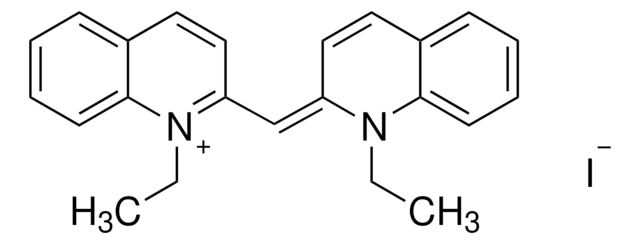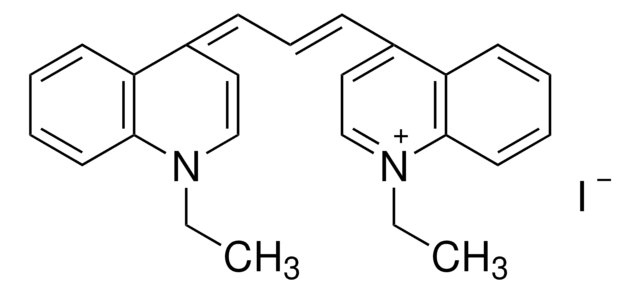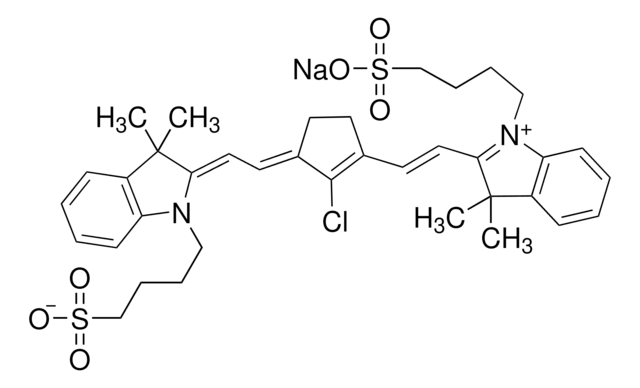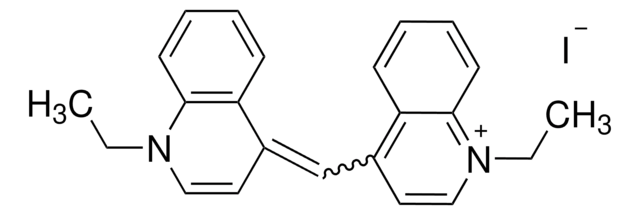173738
3,3′-Diethylthiacarbocyanine iodide
Dye content 95 %
Sinónimos:
3-Ethyl-2-(3-[3-ethyl-2(3H)benzothiazolylidene]-1-propenyl)benzothiazolium iodide, DiSC2(3)
About This Item
Productos recomendados
form
solid
Quality Level
composition
Dye content, 95%
mp
268-270 °C (dec.) (lit.)
λmax
560 nm
SMILES string
[I-].CCN1\C(Sc2ccccc12)=C\C=C\c3sc4ccccc4[n+]3CC
InChI
1S/C21H21N2S2.HI/c1-3-22-16-10-5-7-12-18(16)24-20(22)14-9-15-21-23(4-2)17-11-6-8-13-19(17)25-21;/h5-15H,3-4H2,1-2H3;1H/q+1;/p-1
InChI key
VZBILKJHDPEENF-UHFFFAOYSA-M
¿Está buscando productos similares? Visita Guía de comparación de productos
Categorías relacionadas
General description
Application
signalword
Warning
hcodes
Hazard Classifications
Eye Irrit. 2 - Skin Irrit. 2 - STOT SE 3
target_organs
Respiratory system
Storage Class
11 - Combustible Solids
wgk_germany
WGK 3
flash_point_f
Not applicable
flash_point_c
Not applicable
ppe
dust mask type N95 (US), Eyeshields, Gloves
Elija entre una de las versiones más recientes:
Certificados de análisis (COA)
¿No ve la versión correcta?
Si necesita una versión concreta, puede buscar un certificado específico por el número de lote.
¿Ya tiene este producto?
Encuentre la documentación para los productos que ha comprado recientemente en la Biblioteca de documentos.
Artículos
Developed in the last several years, fluorescence quenching microscopy (FQM) has enabled rapid, inexpensive, and high-fidelity visualization of two-dimensional (2D) materials such as graphene-based sheets and MoS2.
Graphene has emerged as the new wonder material. Being only one atom thick and composed of carbon atoms arranged in a hexagonal honeycomb lattice structure, the interest in this material has exploded exponentially since 2004 when it was first isolated and identified using a very simple method.
Nuestro equipo de científicos tiene experiencia en todas las áreas de investigación: Ciencias de la vida, Ciencia de los materiales, Síntesis química, Cromatografía, Analítica y muchas otras.
Póngase en contacto con el Servicio técnico









